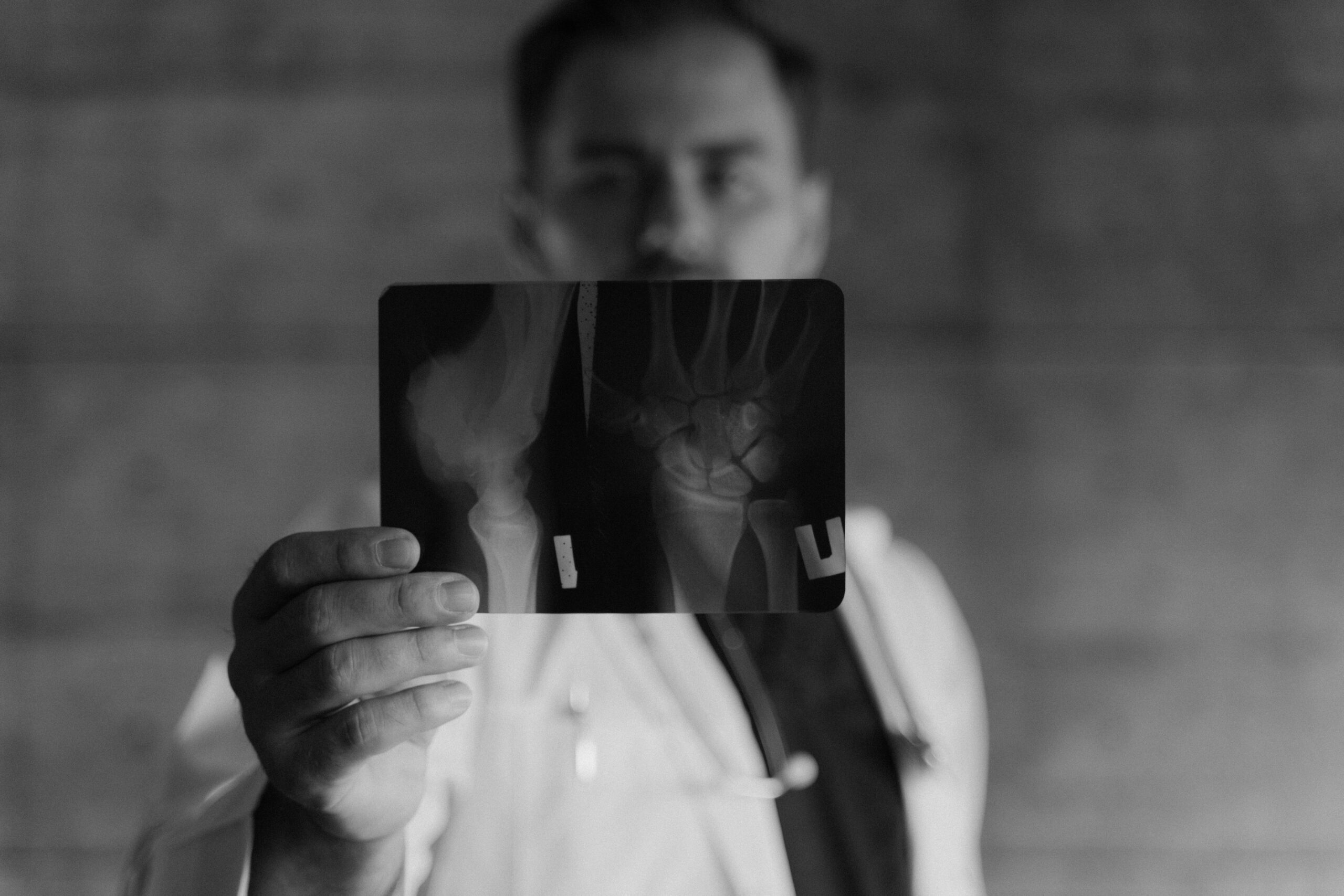Orthopedic Medical Billing Guidelines 2025: Your Ultimate Resource for Error-Free Billing
In this medical billing guide, we will cover some key points regarding orthopedic patient billing guidelines, best practices, and common pitfalls in streamlining your orthopedic billing process and enhancing practice efficiency.
What is Orthopedic Medical Billing?
Orthopedic medical billing is the specific work of handling and filing insurance claims for the treatments that orthopedic surgeons or specialists have rendered..
Orthopedic medical billing is the since it has to do with managing musculoskeletal-related complaints—such as bones, joints, ligaments, and tendons—the expertise required in this specialty lies in the use of a specific combination of both diagnosis and procedural codes (specifically ICD-10 and CPT, respectively). specific work of handling and filing insurance claims for the treatments that orthopedic surgeons or specialists have rendered..
Accurate patient billing will ensure the insurance companies reimburse the services appropriately, as treatments range from non-invasive therapies to complex surgeries. Orthopedic billing also requires handling payer-specific requirements, prior authorizations, and denials of claims.
What Are Essential Orthopedic CPT Codes for Billing?
Orthopedic practices employ multiple CPT codes for appropriate billing of services. Each service, be it a surgical procedure or diagnostic test, is correctly billed and reimbursed through these codes.
Surgical Procedures (10021-69990):
Multiple orthopedic surgeries can be covered, from minor repair to full replacement.
Multiple orthopedic surgeries can be covered, from minor repair to fuAnesthesia (00100-01999 & 99100-99140):
Anesthesiology services are given during orthopedic surgery, preoperative evaluation, and monitoring. replacement.
Pathology & Laboratory (80047-89398):
This would include any form of test or examination taken on the tissue for a diagnostic purpose and in management planning
Evaluation & Management (99201-99499):
Physicians bill E/M services
Radiology (7010-79999):
In orthopedics, the services would include X-rays, MRI scans, and CT scans to identify pathology and for follow-up.
Medicine (90281-99299 & 99500-99607):
Other care of the doctor, like wound dressing, administration of medicines, and injections, not elaborated above.
What Common CPT Codes for Orthopedic Procedures?
23000-23929.
This includes shoulder surgeries, such as joint replacement, arthroscopic procedure, and rotator cuff repair.
23930-24999:
This category covers any surgery on the humerus and elbow, including but not limited to tendon repair, ligament reconstruction, or repair of fractures.
25000-25999:
Includes wrist joint and any surgical procedure on the forearm, such as fracture fixing, carpal tunnel, and treatment for tendonitis.
26010-26989:
Used for surgeries on the fingers and hands, like repairing fractures, tendon-related surgery, and trigger finger release.
22010-22899:
Covers procedures in spinal surgery, especially decompression, spinal fusion, and disc replacement.
11760:
This falls under nail bed repair.
25215:
Uses of carpectomy, only uses to remove all bones on the proximal row in the wrist
64721:
Bills on neuroplasty and or transposition of the median nerve when it crosses over the carpal tunnel.
Professional Expertise:
We believe in growing like a team. Our professionals are not just our team members but also our masters who handle all complications related to your insurance. They are passionate about serving our clients with devotion. Their prior authorization services match high standards to provide seamless approval for medical treatments.
Key Orthopedic Billing Guidelines for Successful Claims
1. Accurate Coding with ICD-10 and CPT Codes
Accurate coding is one of the important factors to ensure the fast processing of claims. Using the correct ICD-10 and CPT codes specific to orthopedic procedures allows the insurers to understand the services rendered and reimburse accordingly.
2. Use Modifiers
Use the appropriate modifiers, for example, "LT" for procedures done on the left side, or "50" for bilateral procedures, to make clear details about the service, thus lessening the chances of claim denial.
3. Prior Authorization
Most of the major orthopedic procedures, including joint replacements, require pre-authorization. Claims will be denied if pre-authorization has not been done. Ensure that you have pre-authorization done before any procedure is carried out.
4. Eligibility and Benefits
Confirm the patient's coverage details before treatment so as not to be surprised by what will and won't be covered by insurance. This creates a transparent understanding of how much liability the patient will assume financially.
5. Complete Claims Documentation
Ensure all claims are adequately documented to facilitate processing and payment validation from the insurer. Insurers generally require more substantial evidence when dealing with complex or very costly procedures.
6. Payer Guidelines
Some insurances differ in their requirements. Make sure that your billing team knows the rules for each payer to help avert wrongful denials.
What Are Best Practices for Orthopedic Medical Billing?
Invest in staff training:
The billing staff will be up-to-date on orthopedic-specific coding and payer requirements.
Orthopedic-specific billing software:
Using billing software for orthopedics improves the process and reduces manual errors.
Carry Out Regular Audits:
Proper auditing would help you in catching up on any error in your outsouce medical billing process so that correction would be done at the right time before getting any denial.
Consider Outsourcing:
When in-house billing takes a lot of time, think about outsourcing it to a specialized orthopedic billing service for accuracy and compliance.
How to Stay Compliant with Orthopedic Billing Regulations?
Closing Note
FAQs
In the USA orthopedic surgeon use standarize CPT codes for reporting of orthopedic procedures such as joint replacements, fracture repairs, and arthroscopies. In orthopedic medical billing, correct CPT usage ensures claims are processed accurately under CMS and private payer guidelines. Errors in CPT coding can trigger audits under the False Claims Act (31 U.S.C. §§ 3729–3733).
Reimbursement rates differ because each state applies its own Medicare Physician Fee Schedule adjustments and private payer contracts. For example, CPT 27447 (total knee arthroplasty) reimburses higher in California than in Texas due to Geographic Practice Cost Indices (GPCIs). Our orthopedic medical billing teams accurately track these state variations to avoid underpayments.
High-complexity procedures like CPT 22845 (spinal instrumentation) or CPT 27447 often cause denials. Problems arise from medical necessity reviews, bundling edits, or modifier misuse. Orthopedic medical billing frequently sees denials when providers do not document intraoperative details required under Medicare’s National Correct Coding Initiative (NCCI).
Laws such as HIPAA (45 CFR Part 162) require standardized code sets, while the Affordable Care Act enforces compliance reviews on reimbursement claims. Orthopedic medical billing must also follow state-specific workers’ compensation fee schedules, which mandate capped rates for certain CPT codes.
By using correct modifiers (e.g., -50 for bilateral procedures) and ensuring documentation meets Local Coverage Determination (LCD) requirements. Orthopedic medical billing departments often appeal underpayment when private insurers pay below state-mandated levels. For example, New York mandates “usual and customary” reimbursement, while Texas allows lower contractual payments unless appealed.
Insurers apply utilization review for high-cost orthopedic codes, particularly in spine and joint replacement surgeries. Orthopedic medical billing often encounters prior authorization hurdles for CPT 27486 (revision knee arthroplasty). Payers justify denials under ERISA and medical necessity laws, requiring robust appeals with operative notes and peer-reviewed literature.
CPT 29880 (knee arthroscopy with meniscectomy) gets denied when operative notes are incomplete, medical necessity is unclear, or modifiers are missing/incorrect, especially in bilateral cases.
For CPT 27130 (total hip arthroplasty), denials happen when prior authorization is missing, conservative therapy documentation is not provided, or diagnosis linkage is incorrect.
CPT 27447 (total knee arthroplasty) is commonly denied due to missing pre-authorization, insufficient medical necessity documentation (like X-rays or failed conservative treatments), or improper use of modifiers in bilateral procedures.
HCPCS Level II codes cover orthopedic supplies like braces (L1833 for knee orthosis) and implants not included in CPT. In orthopedic medical billing, correct HCPCS coding ensures durable medical equipment (DME) and supplies are reimbursed. Reimbursement rates vary by state because Medicare Administrative Contractors (MACs) set local fee schedules. For example, an L1833 brace reimburses higher in New York than in Texas due to regional cost adjustments. Under 42 U.S.C. § 1395l, providers must bill accurately to avoid overpayment recovery.
Common issues arise with codes like A4550 (surgical trays) or L3670 (shoulder orthosis), where insurers often deny payment, calling them “bundled” into surgical CPT charges. Orthopedic medical billing teams face frequent disputes when private payers refuse to reimburse separately despite Medicare guidelines allowing standalone billing. Under the False Claims Act, submitting incorrect or unsubstantiated HCPCS codes can trigger audits, so providers must carefully document medical necessity to protect reimbursement.
| Orthopedic medical billing must comply with both federal and state-specific reimbursement rules. For example, California Labor Code §5307.1 sets maximum reimbursement rates for orthopedic surgeries under the Workers’ Compensation Official Medical Fee Schedule (OMFS). In Texas, the Texas Administrative Code Title 28, Part 2, Chapter 134 governs orthopedic procedure reimbursements for workers’ compensation cases. Federally, 42 U.S.C. §1395w-4 (Medicare Physician Fee Schedule) dictates payment rates nationwide, but each state applies Geographic Practice Cost Indices (GPCIs) that change how much orthopedic providers are paid. |
Orthopedic medical billing often requires billing HCPCS codes for implants. In New York, Public Health Law §2807 regulates billing and reimbursement, requiring hospitals to follow state-set Medicaid and workers’ compensation schedules. Florida Statutes §440.13 limits reimbursement for orthopedic supplies in workers’ compensation cases, capping rates at 200% of Medicare. Providers must adapt billing practices by state or risk denials, delays, or underpayments.
Orthopedic medical billing teams should use state-specific fee schedules and proper modifiers. In Illinois, the Workers’ Compensation Act (820 ILCS 305/8.2) requires reimbursement based on the lesser of the actual charge or 53% above Medicare rates. In Nevada, NAC 616C.260 mandates that orthopedic billing follow the state’s fee schedule for surgery and DME. By aligning documentation with these laws, orthopedic practices can avoid penalties and strengthen appeals under both state law and the federal False Claims Act (31 U.S.C. §§3729–3733).
Table of Contents
- Orthopedic Medical Billing Guidelines 2025: Your Ultimate Resource for Error-Free Billing
- What is Orthopedic Medical Billing?
- What Are Essential Orthopedic CPT Codes for Billing?
- What Common CPT Codes for Orthopedic Procedures?
- Key Orthopedic Billing Guidelines for Successful Claims
- What Are Best Practices for Orthopedic Medical Billing?
- Closing Note





